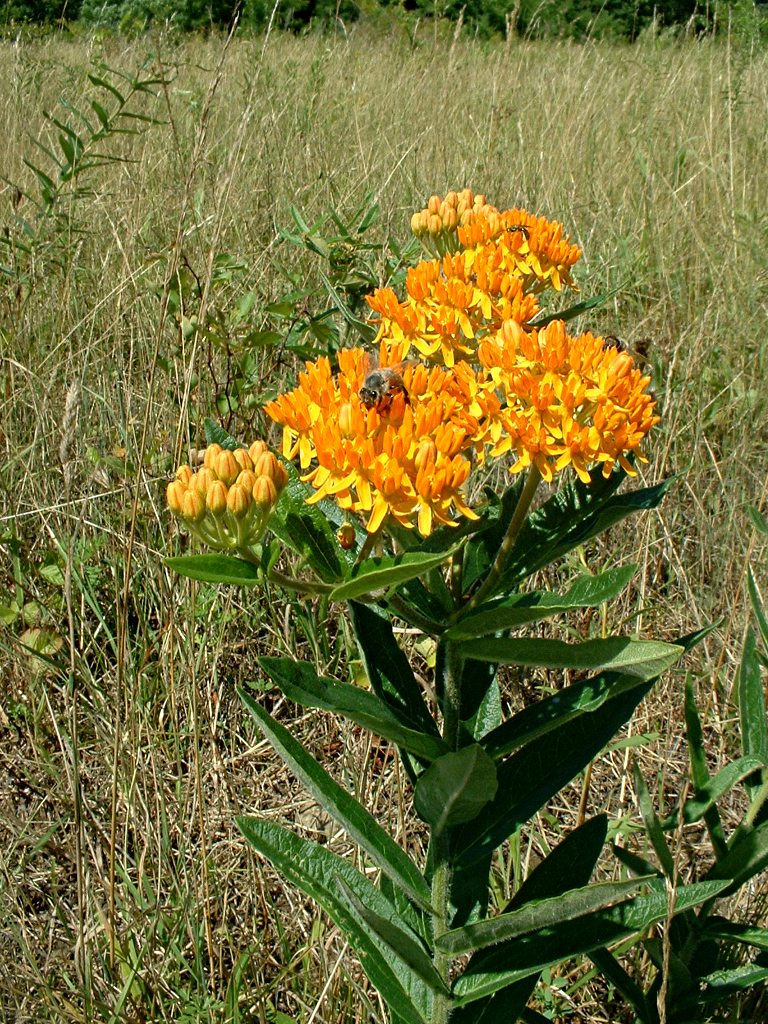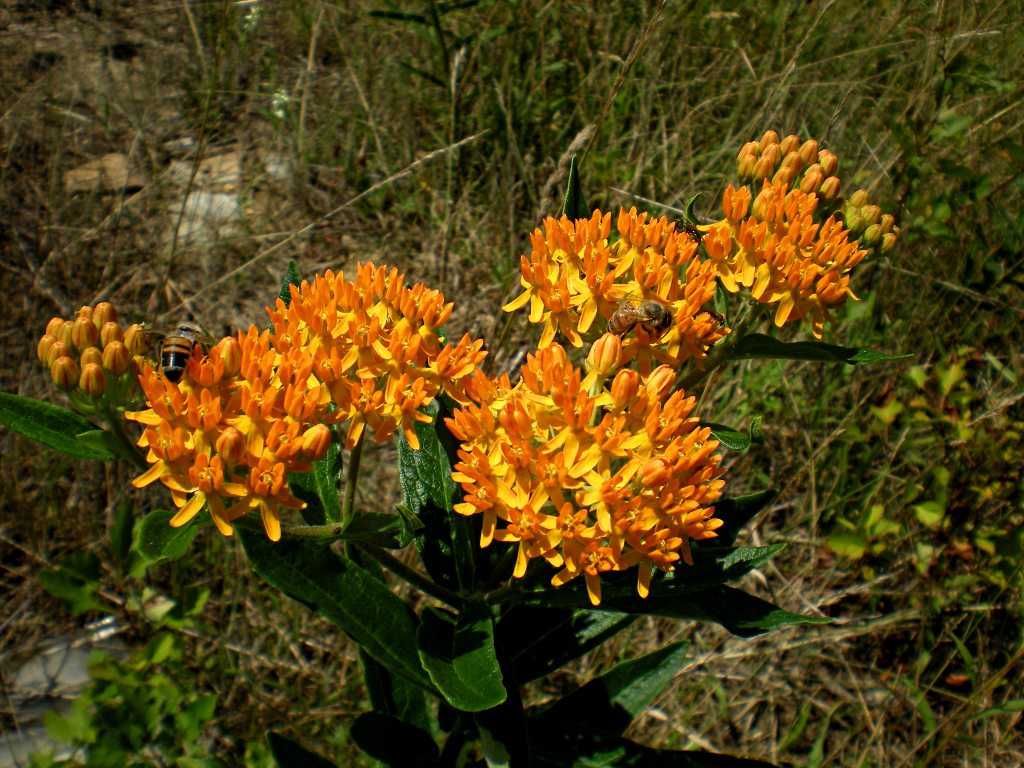 Photographed August 20.
Photographed August 20. Photographed August 20.
Photographed August 20.One of our brightest and most beloved wild flowers, and one of the very few bright orange flowers to decorate our roadsides. Butterfly-weed blooms at about the same time as the Daylily (Hemerocallis fulva), and if possible out-oranges it along our highways and byways. This is a favorite plant of the Monarch butterfly, itself bright orange to match its favorite flower. Rarely some plants will produce flowers in red or yellow, and breeders have produced a variety of domesticated colors in that range. But nothing matches the vivid orange of the wild version. It prefers a dry fallow field or a grassy bank in full sun.
Another English name, Pleurisy-Root, refers to an old use of the plant in folk medicine.


 Photographed July 16.
Photographed July 16.
Gray describes the genus and the species:
ASCLEPIAS [Tourn.] L. MILKWEED, SILKWEED. Calyx persistent; divisions small, reflexed. Corolla deeply 5-parted; divisions valvate in bud, deciduous. Crown of 5 hooded bodies seated on the tube of stamens, each containing an incurved horn. Stamens 5, inserted on the base of the corolla; filaments united into a tube which incloses the pistil; anthers adherent to the stigma, each with 2 vertical cells, tipped with a membranaceous appendage, each cell containing a flattened pear-shaped and waxy pollen-mass; the two contiguous pollen-masses of adjacent anthers, forming pairs which hang by a slender prolongation of their summits from 5 cloven glands tbat grow on the angles of the stigma (extricated from the cells by insects, and directing copious pollen-tubes into the point where the stigma joins the apex of the style). Ovaries 2, tapering into very short styles; the large depressed 5-angled fleshy stigmatic disk common to the two. Follicles 2, one of them often abortive, soft, ovoid or lanceolate. Seeds anatropous, flat, margined, bearing a tuft of long silky hairs (coma) at the hilum, downwardly imbricated all over the large placenta, which separates from the suture at maturity. Embryo large, with broad foliaceous cotyledons in thin albumen. Perennial herbs; peduncles terminal or lateral and between the usually opposite petioles, bearing simple many-flowered umbels, in summer. (The Greek name of Aesculapius, to whom the genus is dedicated.)
Anther-wings broadest and usually angulate-truncate and salient at base; horn conspicuous.
Flowers orange-color; leaves mostly scattered; juice not milky.
A. tuberosa L. (BUTTERFLY-WEED, PLEURISY-ROOT.) Roughish-hairy, 3-9 dm. high; stems ascending or decumbent, very leafy, branching at tie summit, and bearing umbels in a terminal corymb, or scattered in racemes along the branches; leaves from linear to oblong-ovate, sessile or slightly petioled; divisions of the corolla oblong, greenish-orange; hoods narrowly oblong, bright orange, scarcely longer than the nearly erect and slender awl-shaped horns; pods hoary, erect on deflexed pedicels. (Including A. decumbens L.) — Dry fields and banks, N. H. to Ont., Minn., southw. and southwestw. June-Aug.
 Photographed July 18.
Photographed July 18.In Wild Flowers East of the Rockies (1910), Chester Albert Reed gives us a good description of this species:
BUTTERFLY-WEED; PLEURISY-ROOT; ORANGE MILK-WEED (Asclepias tuberosa) is the most brilliantly colored species of the genus. Even those accustomed to the sight of this plant cannot suppress the feeling of admiration that stirs them as they suddenly behold the vivid, orange flashes greeting them as they cross waste or dry fields.
The stem of butterfly-weed is usually erect, from 1 to 3 feet high; it is rather rough and has but little of the milky juices so common to the other species. The leaves are pointed-oblong, very short-stemmed or seated oppositely. The beautiful orange flowers grow in flat-topped clusters or umbels, at the summit of the plant. It is found from Mass, to Minn, and southwards, most abundant in the Southern States. Its roots are used medicinally.